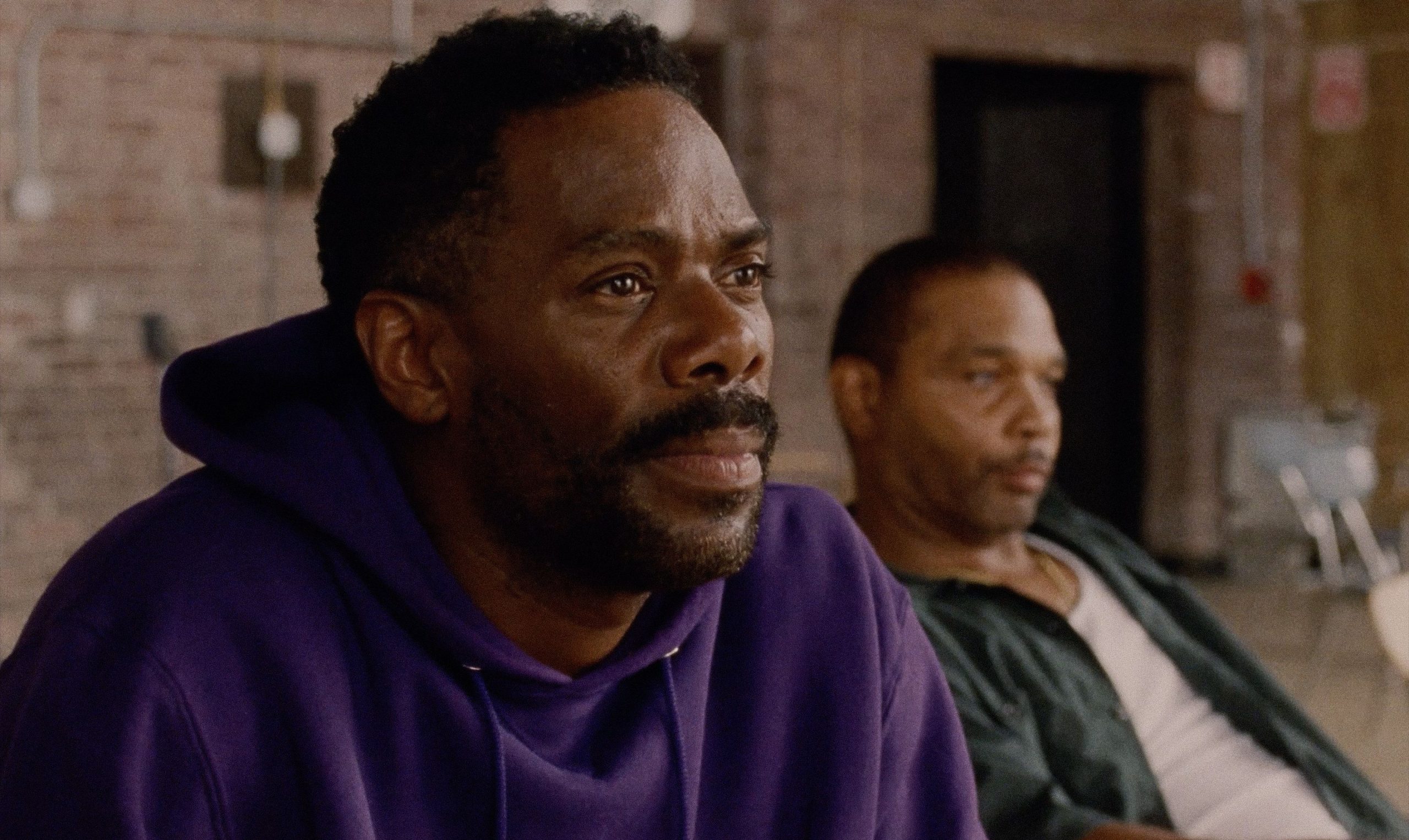Prison has long been seen as fertile soil for drama, but no movie has engaged with that idea quite like Sing Sing. This isn’t a legal drama or an escape thriller, but an exploration of what storytelling and artistic expression can do for a person who dearly needs an outlet. Based on the true story of the Rehabilitation Through the Arts program (RTA) at the maximum security Sing Sing Correctional Facility, the film is an incredibly moving portrayal of life behind bars.
|
SING SING ★★★ (3/4 stars) |
Sing Sing hones in on the production of one of RTA’s biannual plays. The scholarly, wrongly incarcerated Divine G (Colman Domingo, who also serves as executive producer) has plenty of ideas for their newest show; he’s the prison’s resident writer, penning books and half-finished plays in between trips to the library where he reads up on as much legal parlance as he can to prove his innocence. He proposes another drama, perchance of the Shakespearean variety. The other members of the acting troupe feel fine with that, except for newcomer Clarence “Divine Eye” Maclin (played by the real Maclin, a former RTA participant). He thinks they ought to do a comedy instead, not bog down the prison population with more drama and trauma. His suggestion opens up the floodgates of opinions, and soon enough RTA representative Brett (Paul Raci) writes a time-travel musical comedy that includes everything from ancient Egypt to Freddy Kreuger to Hamlet.

Auditions, acting exercises, and rehearsals serve as a way for the men to get in touch with themselves in new ways. They live behind bars physically, yes, but years and years of being locked up have also imprisoned them mentally and emotionally. Most of the RTA troupe is happy to explore their feelings, even when they’re painful, and the experience of entering another world and becoming a character is a welcome one—except for Divine Eye. Though he’s the one who asked for a comedy, setting off a rivalry with Divine G, he won’t allow himself to be seen as silly or weak, even on stage; he gets the role of Hamlet, further ruffling G’s feathers, but threatens to call it quits early and often. Their relationship is the film’s central source of tension, as it turns into a tentative camaraderie between two men who struggle with what their lives have become.
The play itself is haphazard and filled with plot holes that the incarcerated actors are eager to point out, but that’s half the fun. There’s something wonderful about this ragtag team of artists putting together this nearly nonsense show, from Divine G ribbing Maclin about which costume he’ll pick to play Hamlet (hint: they all involve a bedazzled towel) to the inspired way they create practical effects for a pirate ship scene. Stagecraft is on full display, and director Greg Kwedar’s decision to shoot on film adds to the movie’s rich texture. Imperfection is at the heart of the film in more ways than one, and Kwedar crafts a superb visual vocabulary to express that.
Though Sing Sing boasts two Oscar nominees among its cast, Maclin emerges as its brightest star. Divine Eye is a man who’s only been able to conceptualize himself as a gangster for so long that he can’t even begin to think he might be able to become someone else. His tough guy facade gradually cracks and crumbles, each expression of real emotion almost paining him and, in turn, striking the heart of the viewer. Many performers have tackled Hamlet, but Maclin’s take on the play’s famous monologue is one to remember. Together, Maclin and Domingo share a unique chemistry, one of few words but many feelings. Domingo guides the drama masterfully and earnestly, even as the film’s pacing threatens to trip the proceedings up a few times.
Aside from Domingo and a few other cast members, former RTA participants make up the majority of the movie’s ensemble. That in and of itself is a testament to the power of the program, which claims that less than 3% of members return to prison compared to a 60% national recidivism rate. RTA also deserves credit for helping these men find a calling; the ensemble is an exceptionally talented bunch, touching on some of the dark emotional truths of incarceration without drowning the film in dourness. Sing Sing fights the good fight, but it’s more than just an important social issue film. Thanks to its incredible performances and deeply felt depiction of life in prison, it’s a powerful drama that will stick with you.

